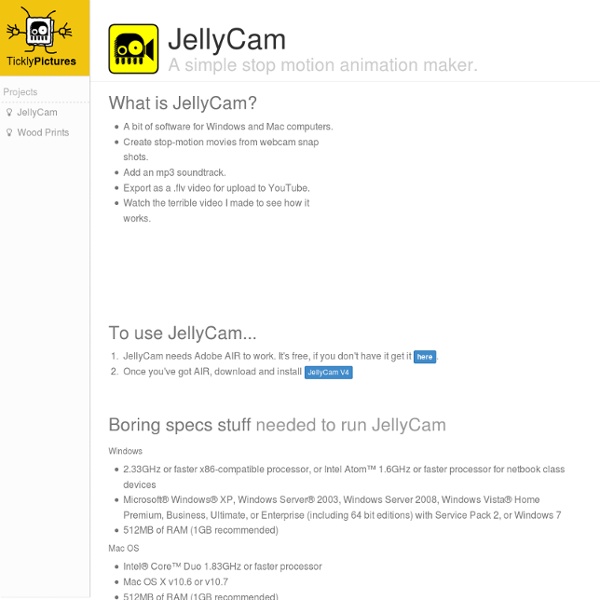



iPad Insight | iPad blog for app reviews, news, tips,how-tos iPad As.... iPads have exploded throughout schools and classrooms. Their flexibility, versatility, and mobility make them a phenomenal learning tool. As teachers seek ways to integrate these devices, we recommend focusing on specific learning goals that promote critical-thinking, creativity, collaboration, and the creation of student-centric learning environments. In other words, begin with..... Productivity Tips - Google Apps for the iPad Productivity Tips To increase efficiency, it helps to add any commonly-accessed websites, such as the Google eBookstore or Google Docs, to the home screen as a bookmark. This allows the shortcut to show up as an app icon, taking users directly where they need to go. To do this, tap the share button at the top of the screen and choose Add to Home Screen. In addition, many third-party apps and software are available to maximize productivity and make tasks simpler for you and your students. iFiles With iFiles, users can save their Google Apps accounts in a list, locking it behind a password. Printopia 2 for Mac If you have a Mac, use Printopia for submitting work. (Be sure to confirm compatibility with your district's network. Flipboard Flipboard is great for Google Reader!
The Educator’s Guide to Copyright, Fair Use, and Creative Commons Lately, we’ve been hearing more and more about digital copyrights and fair use in the news and online – particularly with the whole SOPA/PIPA uproar that recently swept the web. Also, we on the Edublogs support team have been getting more and more complaints and official requests to remove copyrighted content that users have placed on blogs. The legal jargon with respect to digital copyrights can be confusing – especially since different countries have their own laws and regulations. With this post, we hope to dispel a few myths and pull together a complete list of resources for teachers and students to use when blogging and working with content online. Rule #1: You Can’t Use Everything You Find On the Web Dexter the cat hates those that steal his photos… This may seem obvious, but judging by the notices we have received, many teachers (and especially students) are under the impression that if it is on the web, then it is up for grabs. Rule #2: There Are Resources You CAN Use Images Videos
Blogger Buster SmarTots - We recommend the Best Educational Apps for your Child Comic Master The Complete Educator’s Guide to Using Google Reader Love it!? Hate it!? Doesn’t really matter what you think of the new Google Reader interface….. What does matter is they’ve changed some of the Google Reader functionality educators like to use. So here’s my essential guide for what educators now need to know about using Google Reader. Click on the following links to learn more: Intro to RSS and Google Reader One of the smartest things you can do is learn how to use RSS well if you plan to work online with your students. RSS isn’t dead, isn’t hard to learn and is an essential time saving tool for reading latest students’ work in one location quickly. RSS is an acronym which stands for Really Simple Syndication. In simple terms, RSS is a simple and effective way of keeping in touch when new information is added to a website without having to visit the website to check for new updates. The most common RSS reader used is Google Reader. How it works is you subscribe to your favorite website using the RSS feed in Google Reader. Please note : 1. 2. 3.
Social Networking 101: A Beginner's Guide to Facebook, Twitter, Google+, & LinkedIn You've grown up hearing about tweets, status updates, likes, and friends (the online kind, that is). You may have even dabbled in social networking yourself. And there's that now-infamous movie, of course. Whatever your experience or inexperience, we're here to advise you about what you should and shouldn't be doing on today's most-popular social networks. Just in time to go back to school, PCMag is here to give you a complete rundown on how to become a member of the major social networks, how to use them to your best advantage, mistakes to avoid, and what using these networks means for your future. First, let's be clear: You should join every major social network. Now, let's grab our syllabus and let the lesson begin... Facebook It's home to 750 million active users (as of July 2011) who create status updates about what they're doing or thinking, share pictures, videos, messages, and links, play games, and run apps.
The Best Online Learning Games Of 2011 — So Far I usually just do a year-end list on learning games and many other topics, but it gets a little crazy having to review all of my zillion posts at once. So, to make it easier for me — and perhaps, to make it a little more useful to readers — I’m going to start publishing mid-year lists, too. These won’t be ranked, unlike my year-end “The Best…” lists, and just because a site appears on a mid-year list doesn’t guarantee it will be included in an end-of-the-year one. But, at least, I won’t have to review all my year’s posts in December… As usual, In order to make it on this list, games had to: * be accessible to English Language Learners. * provide exceptionally engaging content. * not provide access to other non-educational games on their site, though there is one on this list that doesn’t quite meet this particular criteria. * be seen by me during 2011. You might also be interested in: The Best Online Learning Games — 2010 The Best Online Learning Games — 2009 QuizBreak! Feedback is welcome.